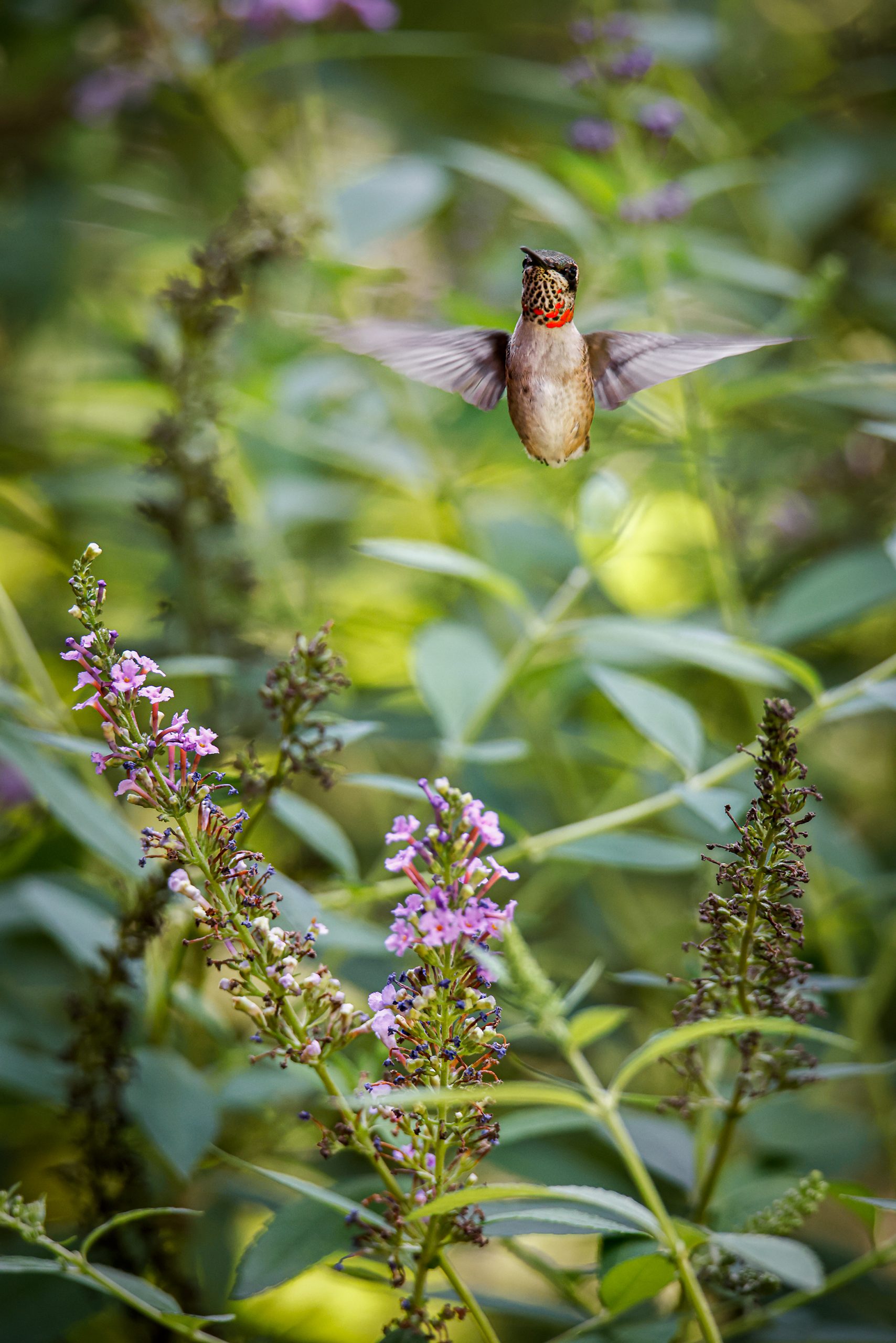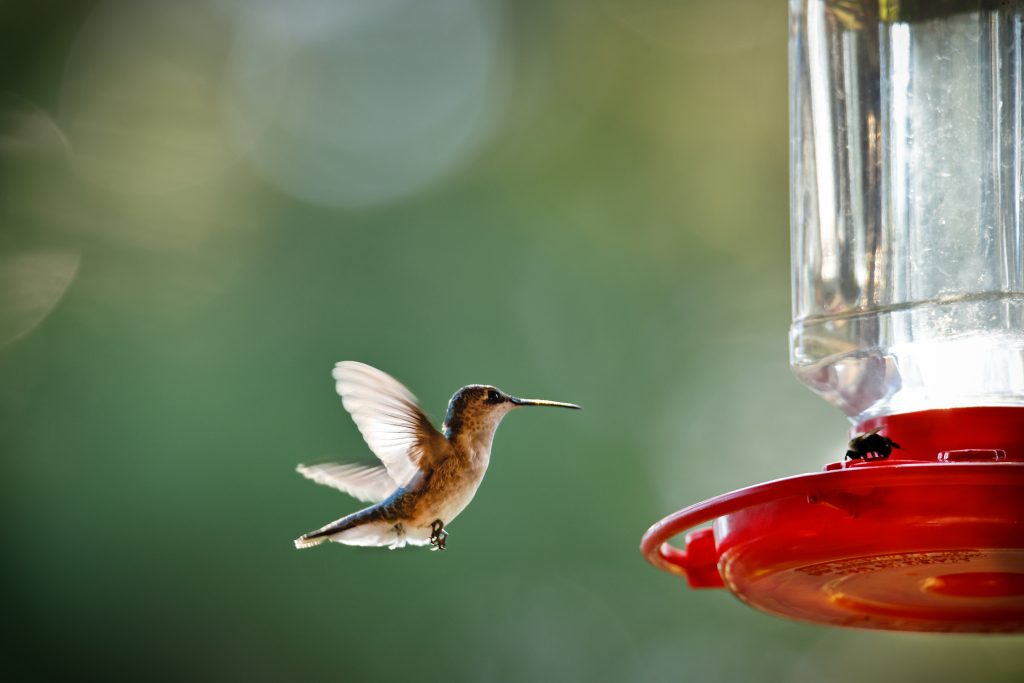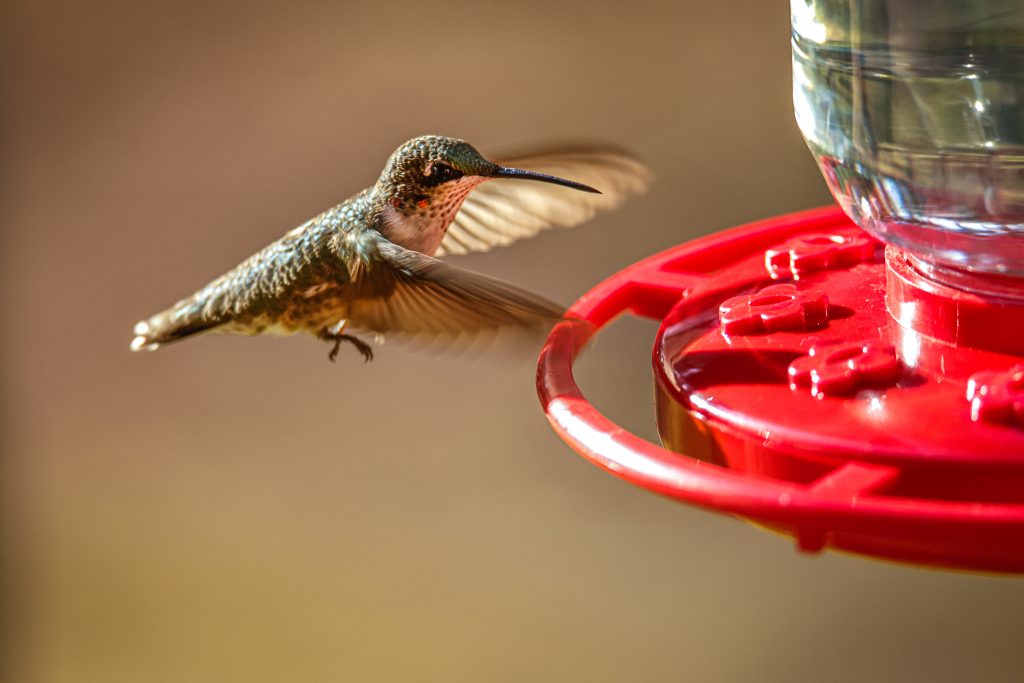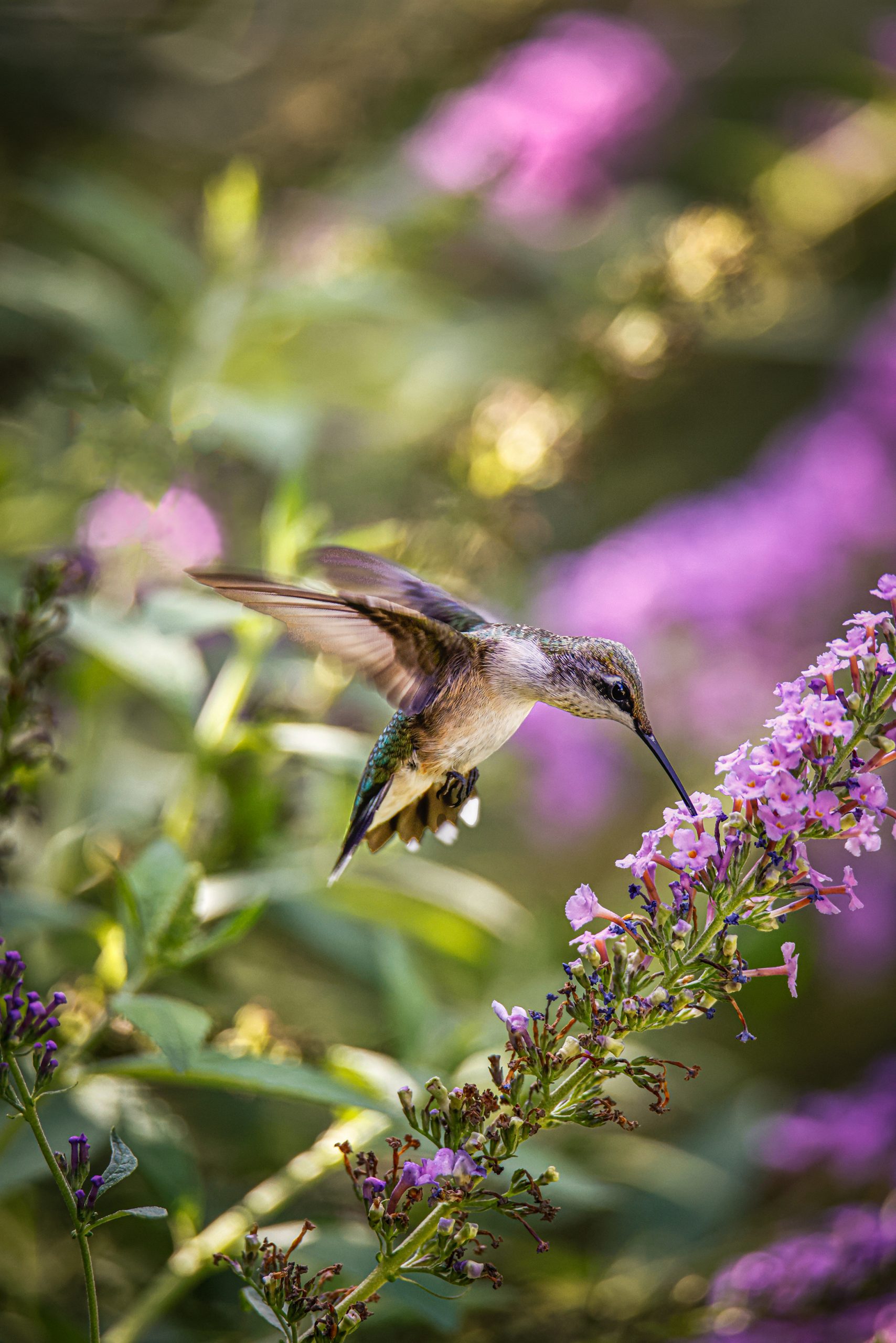
A hummingbird’s iridescent colors are as impressive as his speed and agility. Vibrant hues explode with just a slight turn of his head.
Tiny, tough, and adaptable, hummingbirds are nature’s reminder that small can be extraordinarily powerful. These miniature miracles fascinate the casual observer and ornithologists alike. What makes these creatures so captivating, and how can Columbia residents convince them to keep company in local gardens?
Anyone who sets foot on Mary and Billy Keenan’s sprawling 300-acre farm in the spring and summer will quickly realize that they have discovered the secret to enticing these brilliant birds. Billy’s family has been in the oil business since the first automobile rolled into Columbia. But when he retreats to his farmhouse, his life buzzes with a different kind of energy — hummingbirds. Billy invests tremendous time, and even more sugar and water, in these petite powerhouses. During peak season in June and July, nearly 250 swarm his farmhouse in search of his special nectar recipe, but preparation for all of these visitors begins in April.
Billy’s fascination with the hummingbird began the day he and Palmer, his then 12-year-old son, hauled an antique desk belonging to Billy’s late mother into his farmhouse. Young Palmer explored the cabinets and drawers and found an old hummingbird feeder discreetly perched near the back. Pleased with his treasure, Palmer begged his father to set it up outside. Billy, although skeptical, was willing to oblige his son. He boiled a batch of sugar water, filled the antique feeder, and hung it on the porch. “Within 20 minutes Palmer was screaming, ‘We’ve got a hummingbird!’” says Billy. “I thought he had lost his mind because I had never seen a hummingbird anywhere on this property before.” But he quickly learned that these birds fly in the face of improbability. Billy was hooked.
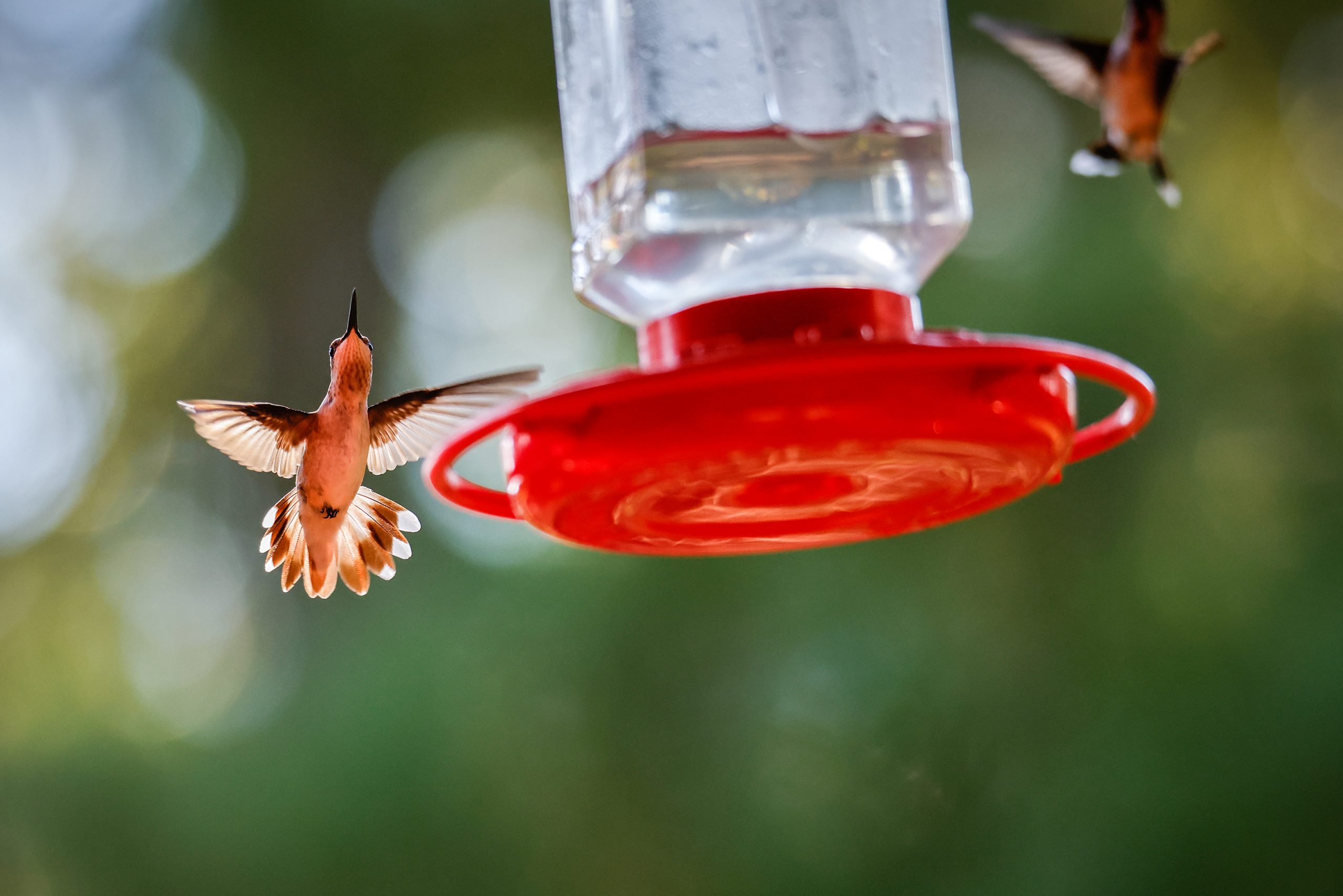
The Hummer
These days on the farm, Mary and Billy love watching their hummingbirds from the rocking chairs on their back porch. Palmer is now grown with a family of his own, but he frequents the farmhouse that is now surrounded by 75 feeders. Mary looks over the still pond adjacent to the farmhouse as one bright hummer buzzes the porch. “They sure are feisty,” Mary says, as she watches the hummingbird begin a game of chase with another.
No bird can match the grace and agility of the hummingbird. They hover, fly backward, and even fly upside down. Scientists have used high-speed motion photography to study the hummingbirds’ flight, clocking some flapping their wings 80 times per second and traveling at 30 miles per hour. Studies show that relative to size, hummingbirds are faster than a fighter jet and can withstand G-forces that would make the average person pass out.
Some hummingbirds become territorially aggressive and will flash their colors in a brilliant display before dive bombing an unwanted intruder. But many males are simply trying to show off their speed to impress a potential mate. All this action exacts a heavy toll: hummingbirds exhaust an enormous amount of energy very quickly. Their high metabolism requires them to eat all day long — consuming approximately half their body weight each day — just to survive.
A hummingbird’s iridescent colors are as impressive as his speed and agility. Vibrant hues explode with just a slight turn of his head. His gorget — the feathers covering the bird’s throat — is unique to his species; each species of hummingbird boasts its own pattern. Each feather on the gorget holds layers of microscopic platelets filled with air bubbles that reflect and refract light, like the way the sun glints off oil film on water. The colors visible on the hummingbird depend upon the angle and quality of light surrounding him.
A ruby-throated hummingbird is identified by his brilliant red gorget. This is the only breed of hummingbird that frequents the eastern United States. An influx of these red-bibbed beauties occurs in the spring as they fly between the Canadian Maritimes and their wintering grounds in Mexico and Central America. Hummingbirds are native only to the Americas, and most species live in Central and South America.
Instead of pairing for the season, male hummingbirds court, mate, and move along to another partner after a matter of weeks. Many males leave town to continue their migration as early as August. The females remain behind as determined and dedicated mothers.
After choosing the perfect nesting spot, the female spins a miniature nest from bits of moss, lichen, thistle, and even spider silk. Once she has formed a dense cup using her chest, she curves the edges ever so slightly inward to protect her jelly-bean-like eggs from tipping out. Nests vary in size, but many measure approximately 1.5 inches in diameter, roughly the size of a golf ball. Billy has noticed that his hummers love to nest high above the ground in the dense longleaf pine and loblolly branches on his property. He has even found nests suspended on scuppernong vines or nestled in a borrowed bluebird’s nest.
Once the mother bird’s eggs have hatched, her babies take their time before launching. These younglings prefer to stay at home in their nest until they have reached the size of an adult hummingbird. Fortunately, the mother prepared for this inevitable scenario by weaving elastic spider silk threads into her nest that allow for flexibility as her brood grows. She even patches her home when necessary as she patiently awaits their long-anticipated day of departure. Once her brood has finally taken flight, they will instinctively follow in their parent’s footstep — eating, mating, and migrating in perfect harmony.
The Hobby
Billy admits that their initial efforts to attract hummingbirds did not go well. They purchased fancy feeders with fake blooms, but the birds didn’t buy it. Billy eventually stumbled upon a plain, quart size feeder that was far easier to clean than the other models. He attributes much of his success to this.
“Hummingbirds are very fastidious,” says Mary. “You have to cultivate the hummingbirds. It takes time. You must keep the nectar fresh and the feeders clean.”
Billy added more feeders every April, and each year more hummingbirds graced his grounds. Billy refills 20 feeders around his farmhouse each day during peak season. But before refilling them with fresh nectar, he patiently cleans each with cold water and a toothbrush. “It’s nearly a full-time job during the summer!” says Mary.
In addition to simple quart feeders, Billy swears by a particular brand of sugar. “I used to use Dixie, but they didn’t seem to prefer it,” says Billy. “Now I only use Monarch.” Billy goes through 700 pounds of sugar every season from April to September.
To make Billy’s recipe:
Mix ¼ cup of Monarch sugar per cup of water in a pot.
Bring the water to a rolling boil to allow the sugar to dissolve.
Allow the mixture to cool on the stovetop before placing it in clean containers in the refrigerator.
Add cold sugar water to a clean feeder and return the feeder outside.
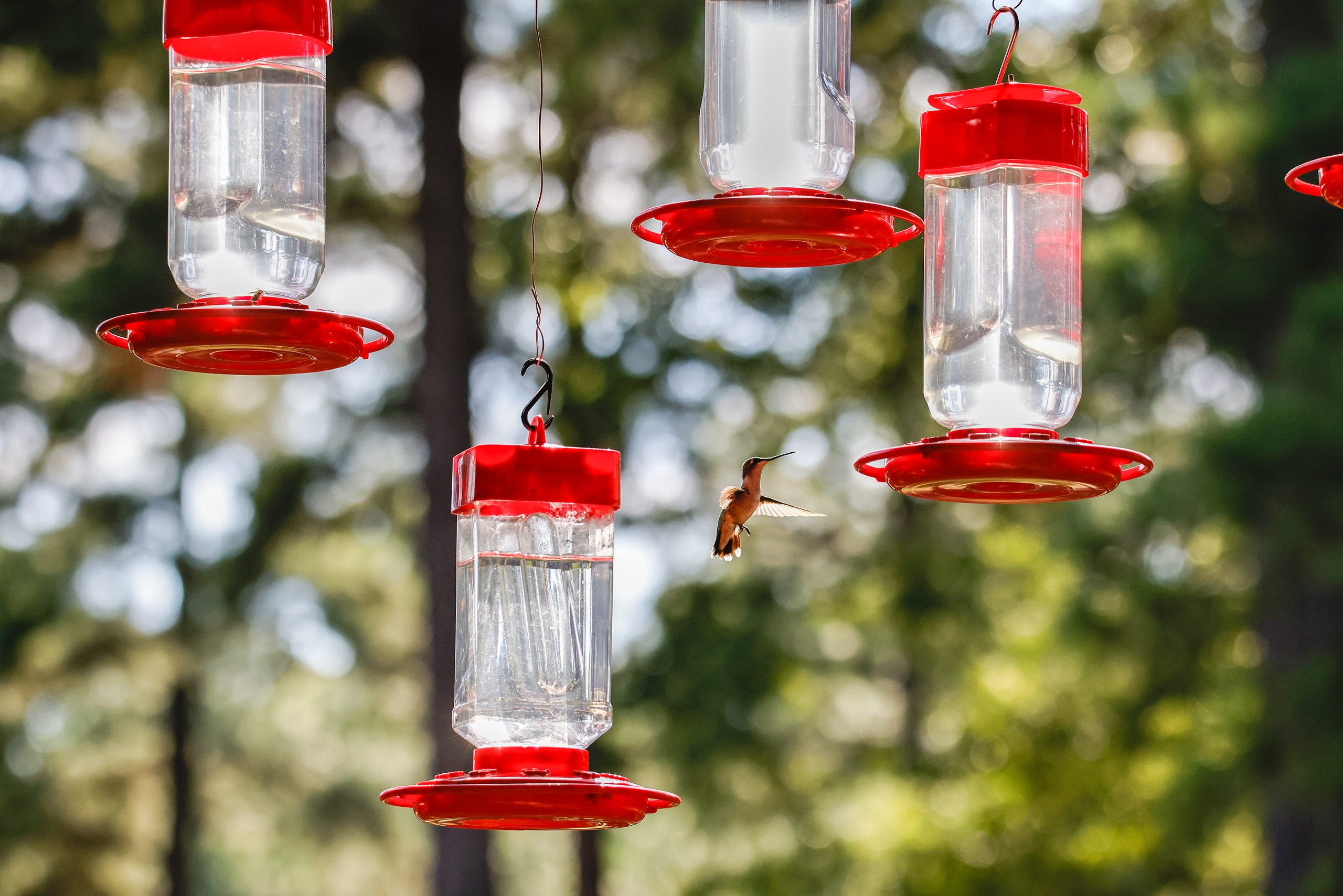
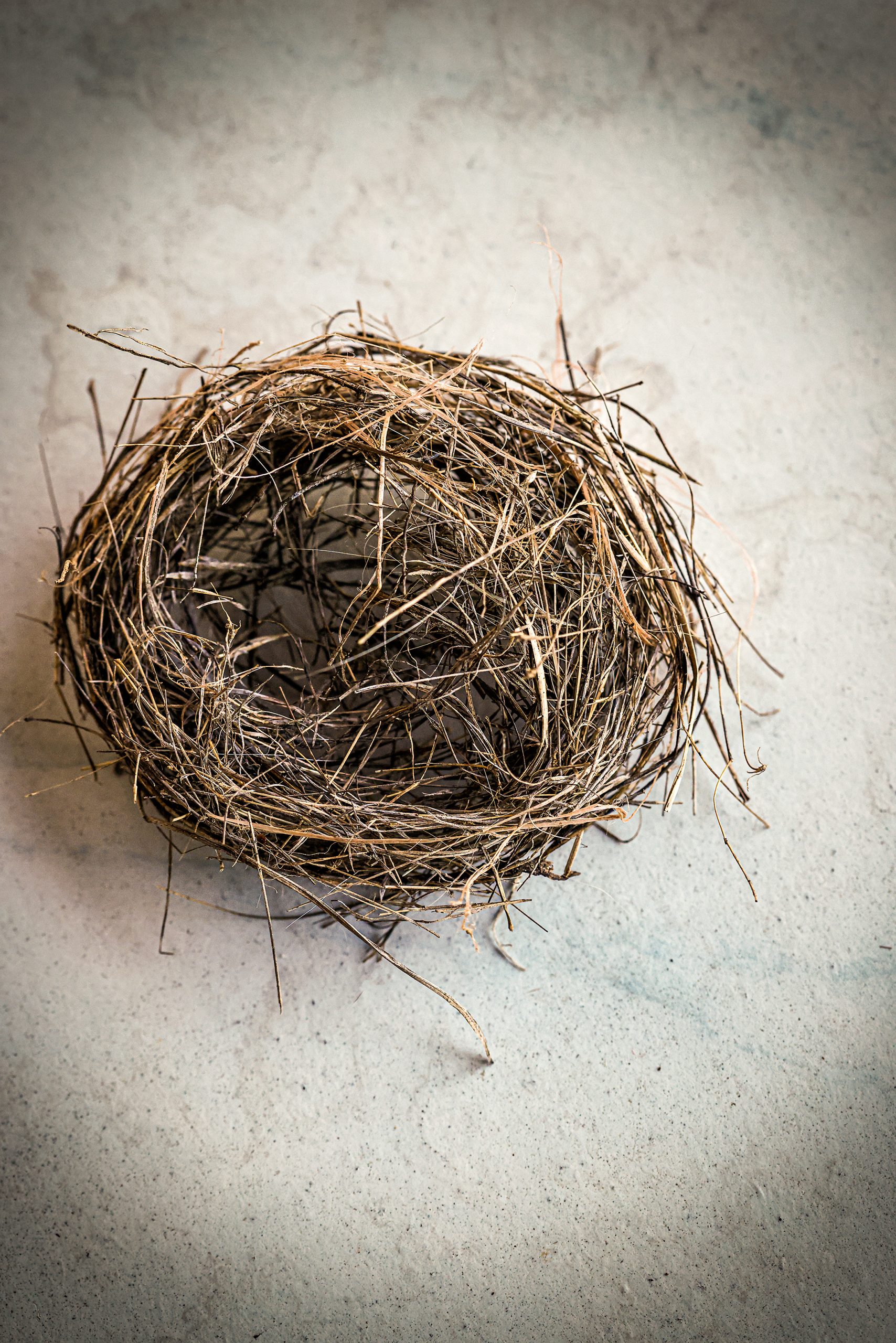
Billy cautions against making the mixture in bulk to use for weeks at a time. He has observed that the birds prefer the mixture as fresh as possible. Change the water in the feeder before it grows cloudy or discolored. During hot weather, sugar water ferments rapidly and produces a toxic alcohol. Additionally, Billy adamantly states that red food coloring is unnecessary and harmful to the hummers. Hummingbirds are attracted more to the quality of the nectar than the color of the feeder or flower for that matter.
In addition to his feeders, Billy has an ample supply of honeysuckle on his property that provides nectar. Ruby-throated hummingbirds are also attracted to lantana, lyre-leaved sage, fire spike shrubs, trumpet vine, Virginia bluebells, and wild columbine. Hummingbirds and tubular flowers have a symbiotic relationship. The hummingbird drinks the nectar with his long, straw-like tongue and inadvertently collects pollen on his head and beak. When the bird visits other flowers, he faithfully delivers the pollen from plant to plant. The fire pink, a bright red wildflower that grows along the eastern United States, is primarily pollinated by the ruby-throated hummingbird. In addition to nectar from flowers and feeders, hummingbirds eat small insects, beetles, ants, aphids, gnats, mosquitoes, and wasps — making them welcome workers in any garden.
But hummingbirds are rarely the only garden creature looking for food. Billy recalls the day he spotted something slithering and stalking his hummers. “I caught a black snake about 7 feet long that had gotten up on the column where the bird feeders are,” Billy says, “He took his neck and his mouth right up to the feeder. If I didn’t know any better, I would have thought it was a branch! He was just waiting for a hummingbird to come up to the feeder to grab him — beak and all.” Billy now uses scented snake repellant around his property. Additionally, cats, hawks, and praying mantises are common predators of hummingbirds. Praying mantises will stake out on flowers and feeders, waiting for an opportunity to strike with deadly force. Any mantis found on a feeder should be relocated a long distance away.
For decades, folklore suggested that feeders should be taken down in the early fall so as not to tempt hummingbirds to delay migration. But a hummingbird will continue his journey before cold weather arrives, proving that his genetic drive is stronger than any nectar recipe. Feeders can be left up through early fall. Billy typically takes his feeders down the first of October, just in time to turn his full attention to football.

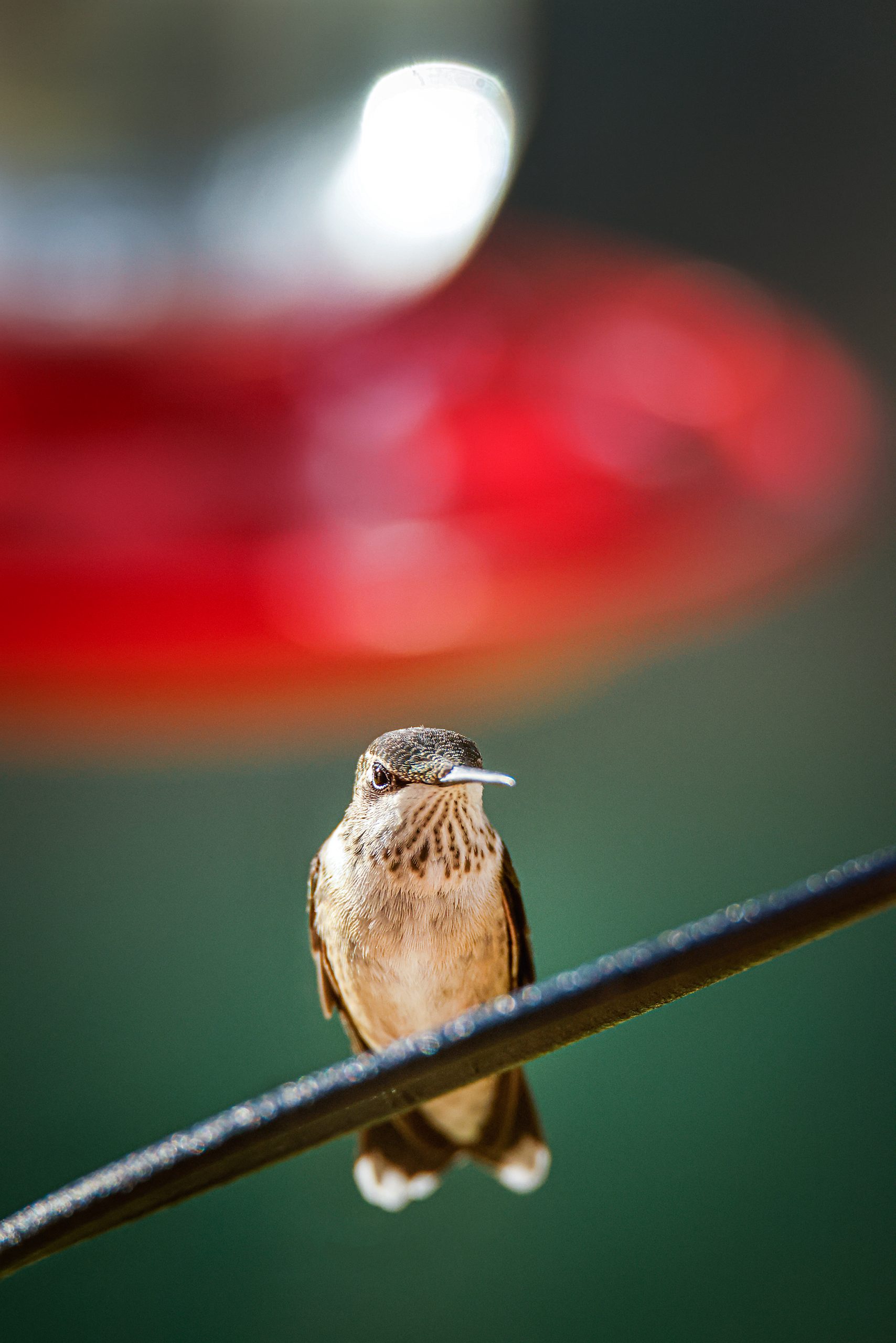
The Haven
At dusk, the hummers swarm the feeders for their last drink of the night before retreating to secluded perches deep in the cover of Billy’s longleaf pine trees. As evening arrives, hummingbirds enter a sleeplike state called torpor. They lower their metabolism and slow their heartbeat, breathing, and body temperature to conserve energy for the long night ahead.
Mary and Billy rhythmically rock in their chairs while they enjoy the last light on the back porch. They overlook their glassy pond as their dogs lie quietly on the steps. Mary sighs deeply. “We are all so removed from nature. That’s part of our fascination with these birds, because we are so fast paced. This place and all that Billy does for the hummingbirds forces us to slow down and pay attention to all that we really should notice.”
As the sun finally sets, the hum that has been the harmony of their homestead is finally quiet, and all are at rest.
